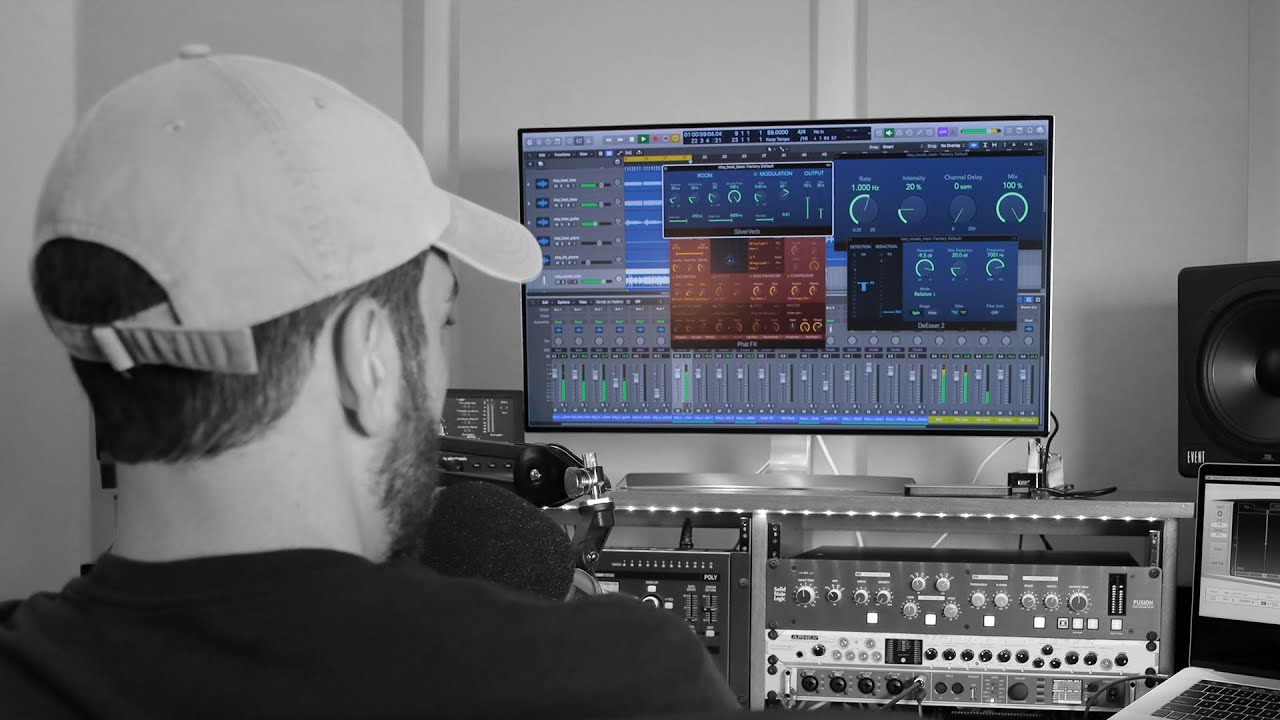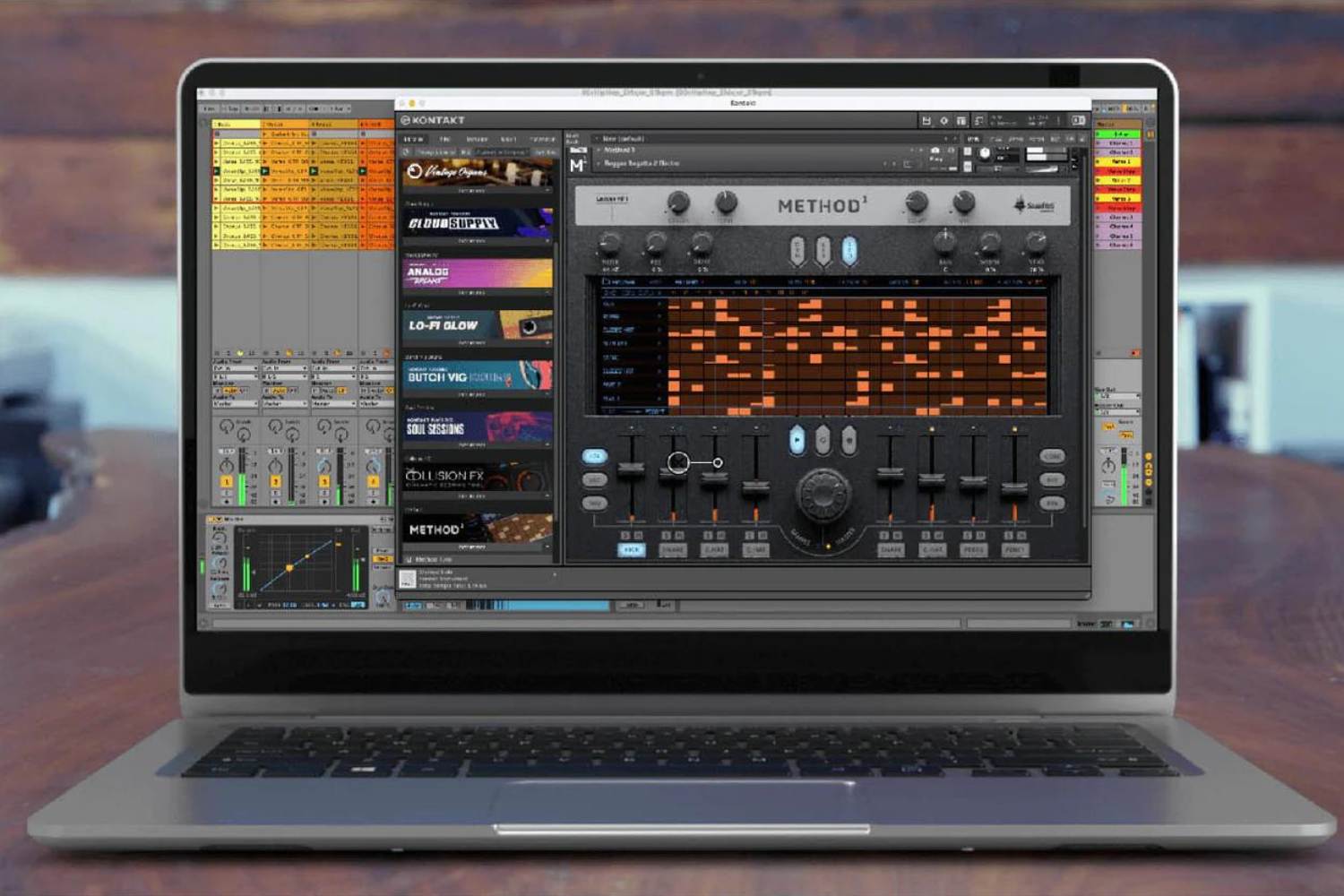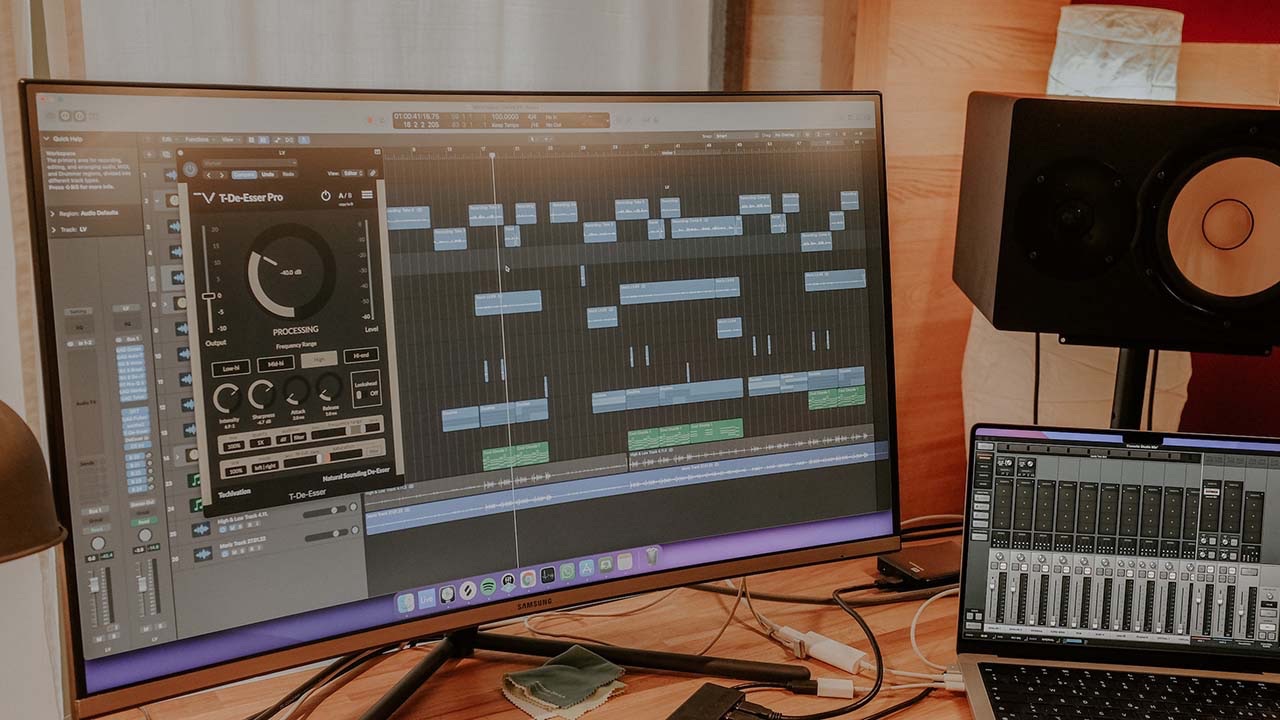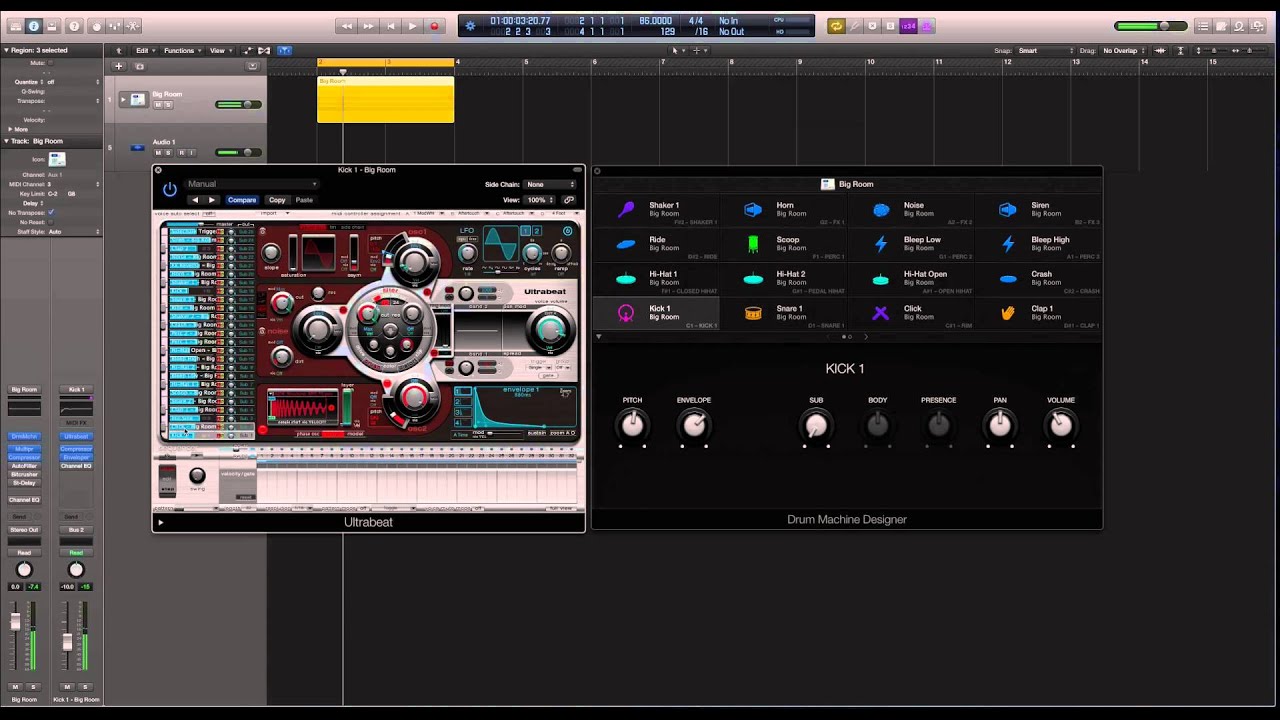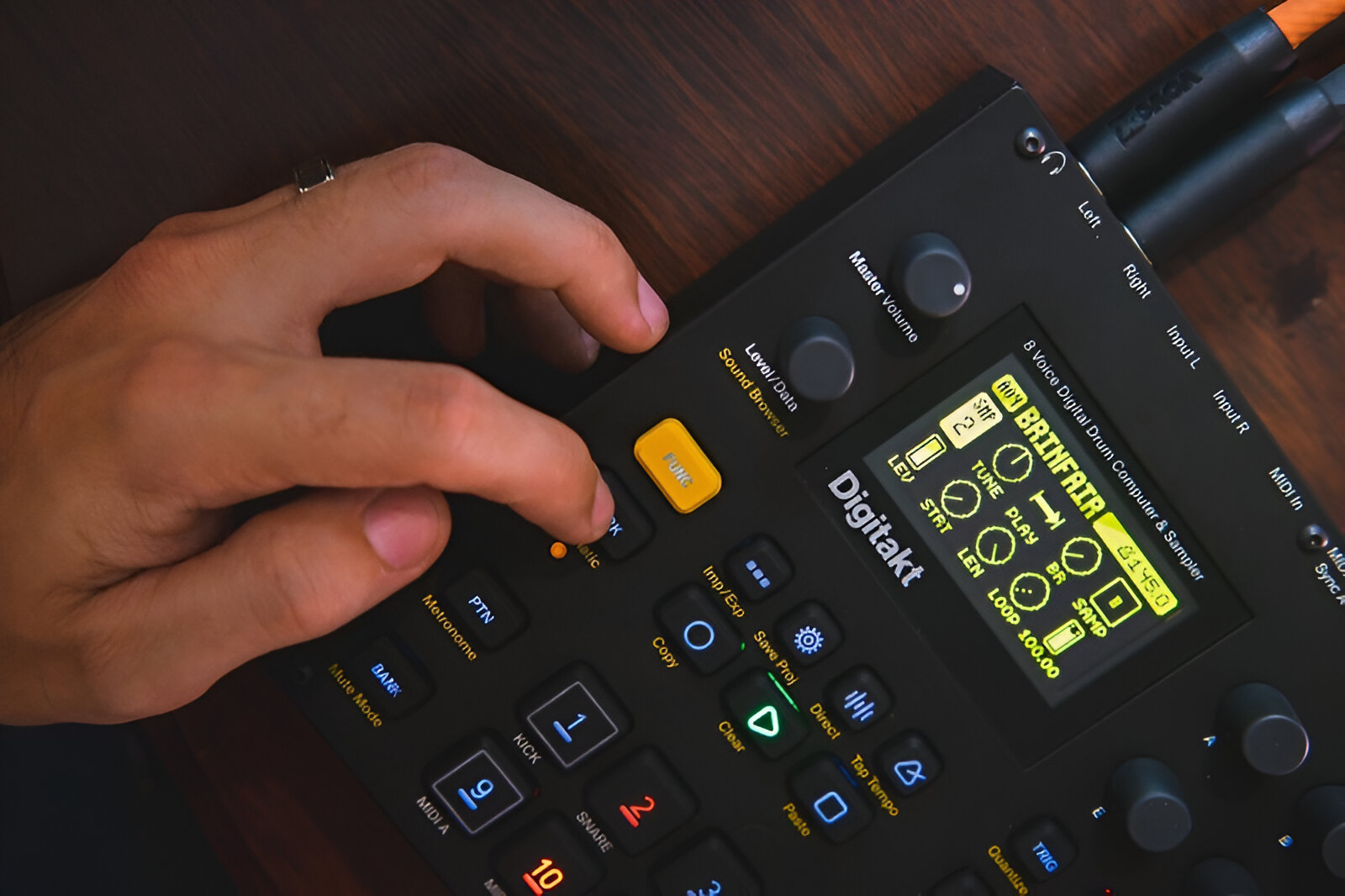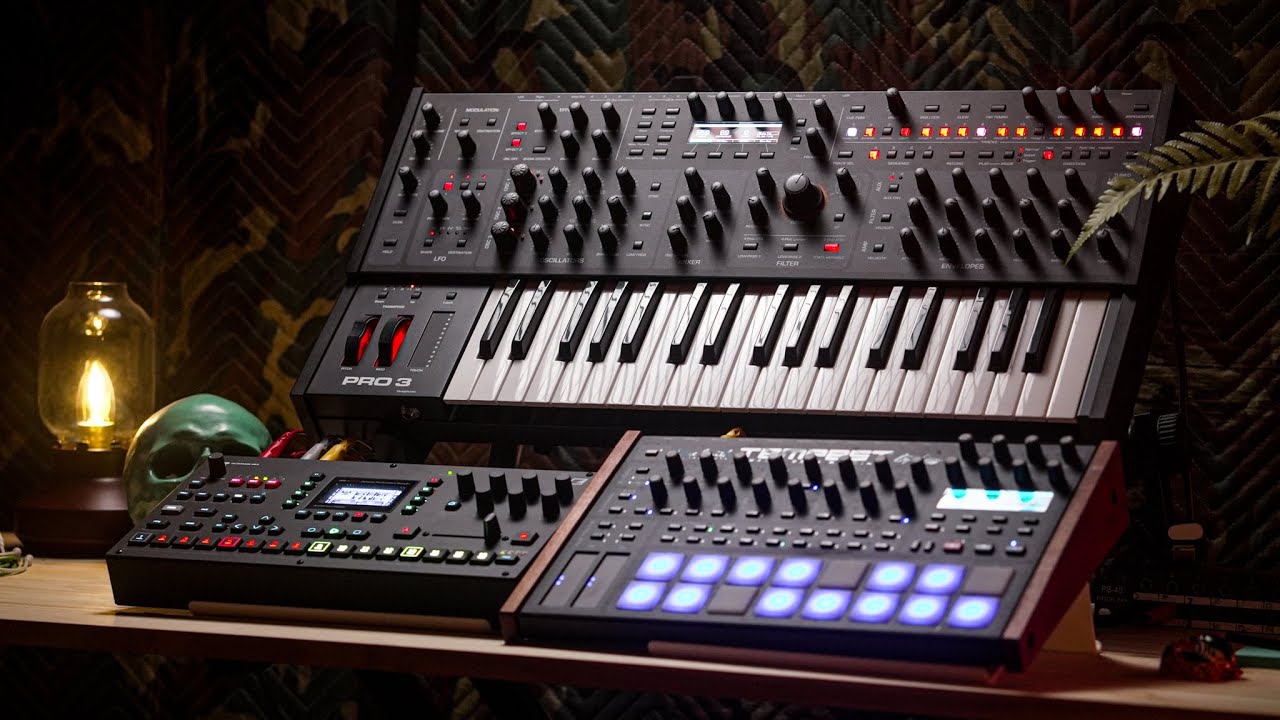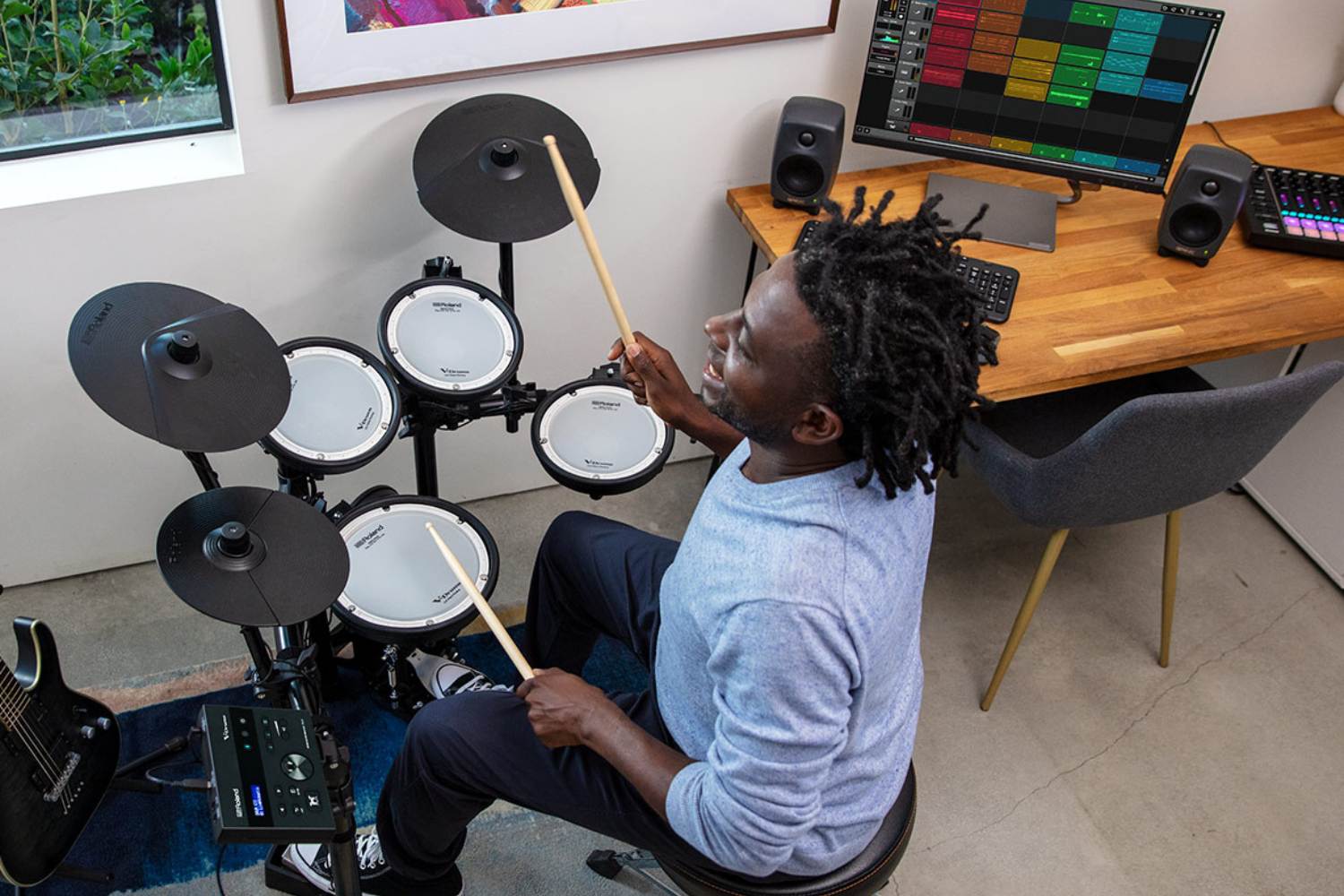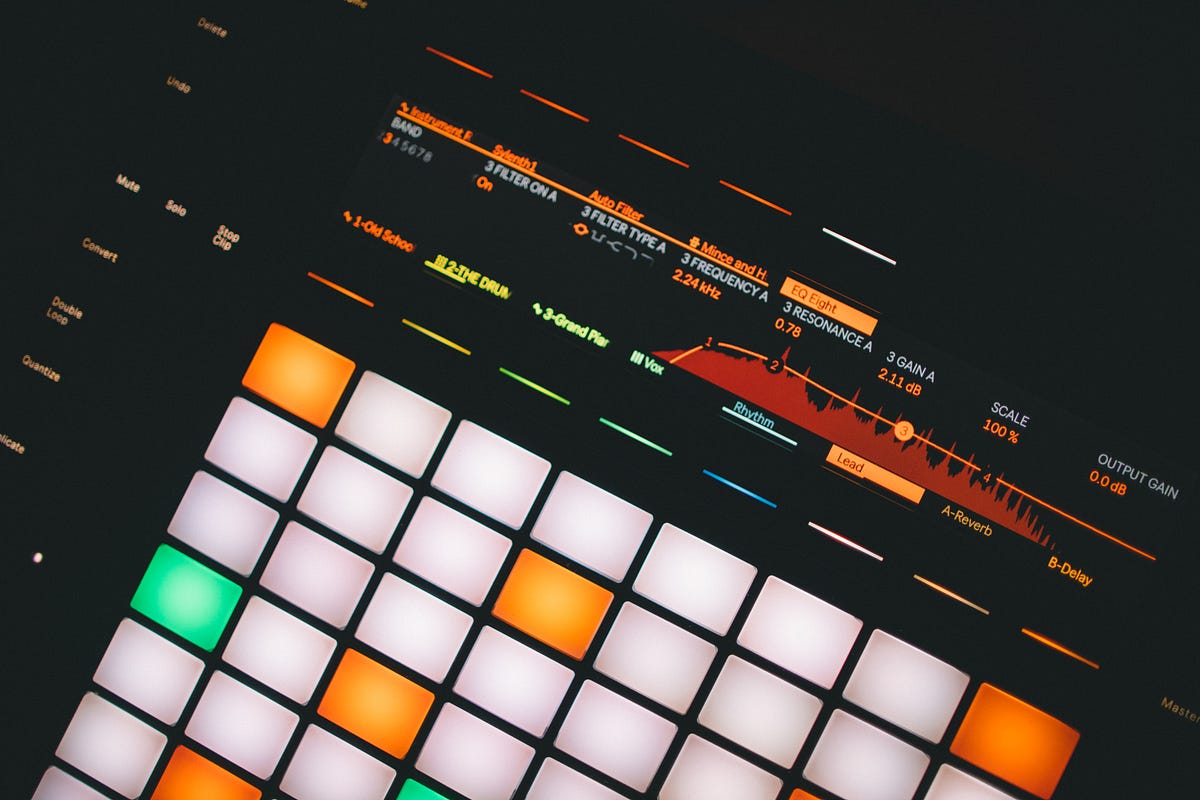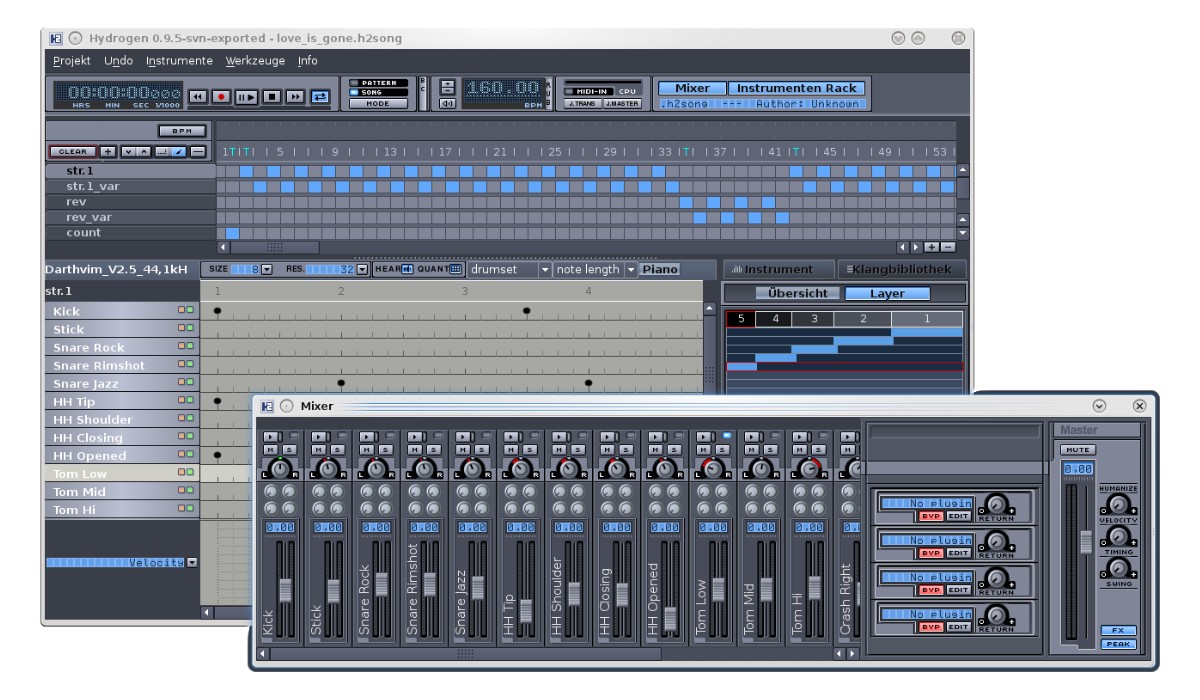Introduction
If you're a music producer or enthusiast looking to add a unique touch to your tracks, incorporating an external drum machine into Logic can elevate your creative process to new heights. By seamlessly integrating an external drum machine with Logic, you can harness the power of both worlds, leveraging the tactile feel and analog sound of hardware while benefiting from the versatility and precision of digital audio workstations.
In this guide, we'll explore the seamless integration of an external drum machine with Logic, delving into the setup, connection, configuration, and utilization of this powerful combination. Whether you're a seasoned producer seeking to expand your sonic palette or a newcomer eager to experiment with new tools, this comprehensive walkthrough will equip you with the knowledge and skills to effectively use an external drum machine in Logic.
As we embark on this journey, it's essential to understand that the fusion of analog and digital technologies opens up a realm of sonic possibilities. The tactile interface of a drum machine, coupled with the boundless potential of Logic's digital environment, empowers you to craft compelling rhythms and textures with finesse and precision.
Throughout this guide, we'll cover the fundamental steps of integrating an external drum machine into Logic, from the initial setup and connection to the intricate configuration of MIDI settings. Additionally, we'll explore the process of recording and editing drum patterns, as well as leveraging Logic's effects and processing capabilities to enhance the sonic character of the drum machine's output.
By the end of this journey, you'll not only have a firm grasp of how to effectively incorporate an external drum machine into Logic but also gain valuable insights and tips for optimizing your workflow. So, let's dive into the realm of rhythmic exploration and discover the seamless synergy between hardware and software in the realm of music production.
Setting Up the External Drum Machine
Before delving into the seamless integration of your external drum machine with Logic, it’s crucial to ensure that the hardware setup is optimized for efficient and reliable operation. The initial steps involve positioning the drum machine within your studio setup, connecting it to a power source, and establishing the necessary audio outputs for routing the sound into Logic.
First and foremost, identify an accessible and ergonomic position for your drum machine within your studio environment. Whether it’s nestled alongside your MIDI controller or positioned within arm’s reach for intuitive interaction, the physical placement of the drum machine plays a pivotal role in facilitating a seamless workflow.
Once the physical placement is determined, connect the drum machine to a stable power source, ensuring that it’s readily powered on whenever you’re ready to infuse your tracks with rhythmic flair. Additionally, establish the audio outputs of the drum machine, whether it’s through dedicated audio interfaces, mixer channels, or audio routing systems, ensuring that the sonic output can be effectively captured and processed within Logic.
Furthermore, consider the integration of the drum machine with your existing MIDI controller or interface, if applicable, to streamline the interaction between hardware and software. By establishing a cohesive connection between your MIDI controller, drum machine, and Logic, you can seamlessly navigate between rhythmic programming and overall track arrangement, harnessing the best of both realms.
As you set up the external drum machine, take a moment to familiarize yourself with its interface, controls, and sonic capabilities. Understanding the nuances of your drum machine’s sound architecture and performance parameters empowers you to leverage its unique sonic character within the digital realm of Logic, laying the groundwork for a harmonious fusion of analog warmth and digital precision.
With the physical and functional setup of the external drum machine optimized, you’re poised to embark on a transformative journey of rhythmic exploration within the realm of Logic, seamlessly bridging the tactile allure of hardware with the boundless potential of digital music production.
Connecting the Drum Machine to Logic
Once the external drum machine is strategically positioned and set up within your studio environment, the next crucial step involves establishing a seamless connection between the drum machine and Logic. This pivotal link serves as the conduit through which the rhythmic prowess of the drum machine harmonizes with Logic’s digital domain, enabling you to harness the combined strengths of both platforms.
Begin by identifying the appropriate audio outputs on your drum machine, ensuring that the sonic output is routed to an audio interface, mixer, or audio routing system capable of interfacing with Logic. Whether it’s through dedicated audio cables, balanced connections, or digital interfaces, the goal is to establish a robust audio pathway that faithfully transmits the drum machine’s sonic output to Logic.
With the audio connections in place, focus on integrating the MIDI capabilities of the drum machine with Logic’s MIDI input channels. This involves connecting the MIDI output of the drum machine to the MIDI input of your audio interface or MIDI controller, facilitating the seamless transmission of MIDI data from the drum machine to Logic.
In the realm of Logic, navigate to the MIDI settings and ensure that the MIDI input from the drum machine is correctly recognized and configured within the software. This step is pivotal in establishing a bidirectional communication channel, allowing Logic to receive MIDI data from the drum machine for rhythmic programming and performance, while also enabling Logic to transmit MIDI data back to the drum machine for synchronization and control.
As the audio and MIDI connections are established, take a moment to verify the signal flow and functionality of the drum machine within Logic. Test the audio output to ensure that the sonic character of the drum machine is faithfully captured within Logic, and verify the MIDI communication to confirm that Logic accurately receives and responds to the rhythmic input from the drum machine.
By seamlessly connecting the drum machine to Logic, you’re laying the foundation for a cohesive integration that transcends the boundaries of hardware and software, empowering you to craft compelling rhythms and textures with the combined prowess of analog warmth and digital precision. This seamless fusion sets the stage for a transformative creative journey, where the rhythmic allure of the drum machine converges harmoniously with Logic’s boundless sonic potential.
Configuring MIDI Settings
Once the physical and audio connections between the external drum machine and Logic are established, the next pivotal step involves configuring the MIDI settings within Logic to ensure seamless communication and synchronization between the two platforms. This intricate configuration lays the groundwork for harnessing the rhythmic prowess of the drum machine while leveraging Logic’s MIDI capabilities to craft intricate patterns and performances.
Begin by accessing Logic’s MIDI settings, where you’ll navigate to the MIDI preferences or settings panel to configure the MIDI input and output channels. Within this interface, ensure that the MIDI input from the drum machine is correctly recognized and assigned to a dedicated MIDI channel within Logic, facilitating the reception of MIDI data from the drum machine for rhythmic programming and performance.
Additionally, verify that the MIDI output from Logic is appropriately configured to transmit MIDI data to the drum machine, enabling Logic to synchronize with the drum machine and control its parameters, tempo, and playback functions. This bidirectional MIDI communication establishes a seamless link between the two platforms, allowing for fluid interaction and synchronization.
Furthermore, delve into Logic’s MIDI mapping and routing capabilities to customize the MIDI assignments and mappings for the drum machine’s controls and parameters. This step empowers you to tailor the MIDI communication between Logic and the drum machine, optimizing the integration for intuitive control over the drum machine’s functions and performance parameters directly from within Logic’s interface.
As you configure the MIDI settings, consider exploring Logic’s MIDI effects and processing capabilities to enhance the rhythmic input from the drum machine. Whether it’s applying MIDI quantization, velocity adjustments, or intricate MIDI manipulation, Logic’s MIDI tools offer a wealth of creative possibilities to refine and embellish the rhythmic nuances captured from the drum machine.
By meticulously configuring the MIDI settings within Logic, you’re forging a cohesive bond between the external drum machine and the digital realm of Logic, enabling a symbiotic relationship where the tactile expressiveness of the drum machine converges with Logic’s precision and versatility. This intricate configuration sets the stage for a transformative creative journey, where the rhythmic tapestry woven by the drum machine seamlessly integrates with Logic’s boundless sonic potential, opening up a realm of rhythmic exploration and sonic innovation.
Recording and Editing Drum Patterns
With the external drum machine seamlessly integrated into Logic, you’re poised to embark on a rhythmic odyssey, capturing and refining compelling drum patterns within the digital realm. Whether you’re seeking to lay down infectious grooves, intricate rhythms, or dynamic percussive textures, Logic’s intuitive recording and editing capabilities empower you to sculpt and refine drum patterns with precision and finesse.
Begin by setting the tempo and time signature within Logic to establish the rhythmic framework for your composition. With the rhythmic canvas primed, engage the recording mode and trigger the drum machine to lay down captivating patterns, leveraging its tactile interface to infuse the performance with dynamic nuances and expressiveness.
As the drum patterns are captured within Logic, utilize the MIDI editing tools to refine and embellish the rhythmic performances. Whether it’s quantizing the MIDI data to align the rhythmic elements with precision, adjusting the velocity to impart dynamic variation, or manipulating the MIDI notes to craft intricate patterns, Logic’s MIDI editing capabilities offer a wealth of creative control over the captured drum performances.
Furthermore, explore Logic’s drum sequencing and pattern-based editing features to assemble and arrange the captured drum patterns into cohesive musical structures. Whether it’s arranging verse-chorus patterns, crafting dynamic drum fills, or experimenting with evolving rhythmic motifs, Logic’s pattern-based editing empowers you to sculpt captivating drum arrangements with fluidity and finesse.
Delve into Logic’s array of drum and percussion instruments, leveraging its diverse sound libraries and synthesis capabilities to augment and embellish the captured drum patterns. Whether it’s layering electronic textures, integrating acoustic percussion, or sculpting hybrid drum sounds, Logic’s sonic palette offers boundless possibilities to enrich and expand the sonic character of your drum performances.
By seamlessly recording and editing drum patterns within Logic, you’re not only harnessing the rhythmic prowess of the external drum machine but also tapping into Logic’s versatile toolkit for sonic sculpting and arrangement. This collaborative synergy between hardware and software empowers you to craft compelling drum performances with finesse and precision, opening up a realm of rhythmic exploration and sonic innovation within the digital domain.
Using the Drum Machine with Logic’s Effects and Processing
Once the rhythmic performances from the external drum machine are seamlessly captured within Logic, the next phase of sonic exploration involves leveraging Logic’s diverse array of effects and processing tools to sculpt and enhance the sonic character of the drum patterns. Whether you’re aiming to infuse the drum performances with spatial depth, dynamic punch, or textural richness, Logic’s effects and processing capabilities offer a wealth of creative possibilities to elevate the sonic impact of the drum machine’s output.
Begin by exploring Logic’s comprehensive suite of audio effects, ranging from EQ, compression, and saturation to reverbs, delays, and modulation processors. These tools enable you to shape the tonal balance, dynamic range, and spatial positioning of the drum patterns, imbuing them with sonic clarity, impact, and depth.
Delve into Logic’s dynamic processing tools, such as transient designers, multiband compressors, and envelope shapers, to refine the transient response, dynamic articulation, and overall impact of the drum performances. By sculpting the transient characteristics and dynamic envelope of the drum patterns, you can imbue them with enhanced punch, clarity, and expressive nuance.
Explore Logic’s spatial effects and ambience processors to infuse the drum performances with immersive spatialization, enveloping them in lush reverberation, expansive ambience, and dynamic spatial movement. Whether it’s crafting intimate room sounds, cavernous reverbs, or ethereal ambience, Logic’s spatial processing tools offer a canvas for sculpting captivating sonic environments for the drum patterns to inhabit.
Additionally, consider integrating Logic’s creative effects and modulation processors to imbue the drum performances with unique character and expressive flair. Whether it’s applying rhythmic gating, dynamic filtering, or intricate modulation, these effects offer a playground for infusing the drum patterns with captivating sonic movement and textural evolution.
By harnessing Logic’s effects and processing capabilities, you’re not only enhancing the sonic impact of the drum machine’s performances but also sculpting a sonic narrative that transcends traditional boundaries. This collaborative synergy between the tactile allure of the drum machine and the boundless sonic potential of Logic’s effects and processing tools empowers you to craft compelling drum performances with depth, expressiveness, and sonic richness, elevating your rhythmic explorations to new heights within the digital realm.
Tips for Optimizing Workflow
Efficiency and creativity go hand in hand when integrating an external drum machine with Logic. To streamline your workflow and maximize the potential of this powerful combination, consider the following tips and techniques that can enhance your rhythmic explorations and creative process:
- Custom MIDI Mapping: Tailor the MIDI mappings within Logic to align with the control parameters of your drum machine, facilitating intuitive and seamless interaction between hardware and software. By customizing the MIDI mappings, you can expedite the process of tweaking drum machine parameters directly from within Logic’s interface, fostering a fluid and responsive creative workflow.
- Template Creation: Develop custom project templates within Logic that are optimized for integrating the external drum machine. By pre-configuring MIDI, audio, and effects routing, as well as instrument setups, you can expedite the setup process for future projects, allowing you to dive straight into rhythmic experimentation without the need for repetitive configuration tasks.
- Utilize Logic’s Drum Synthesis and Sampling: Explore Logic’s built-in drum synthesis and sampling capabilities to complement the sonic palette of the external drum machine. By integrating Logic’s diverse drum instruments and sample libraries, you can expand the sonic textures and timbres at your disposal, enriching the rhythmic tapestry with a fusion of analog and digital sonic elements.
- Experiment with Automation: Leverage Logic’s automation tools to craft dynamic and evolving rhythmic performances. Whether it’s automating parameters on the drum machine itself or within Logic’s effects and processing chain, automation offers a canvas for sculpting expressive rhythmic movements and sonic transformations, adding depth and nuance to your drum performances.
- Real-Time Performance and Recording: Embrace the spontaneity and expressiveness of real-time performance with the drum machine, capturing dynamic and organic rhythmic variations within Logic. Whether it’s recording live jam sessions or performance-driven improvisations, the tactile interaction with the drum machine can yield compelling rhythmic performances that breathe life into your compositions.
By incorporating these tips into your workflow, you can harness the full potential of integrating an external drum machine with Logic, fostering a creative environment where rhythmic exploration and sonic innovation converge seamlessly. These techniques not only optimize your workflow but also inspire new avenues of rhythmic expression, empowering you to craft compelling and dynamic drum performances within the digital realm.
Conclusion
As we conclude our exploration of integrating an external drum machine with Logic, it’s evident that the harmonious fusion of hardware and software unlocks a realm of rhythmic exploration and sonic innovation. By seamlessly bridging the tactile allure of the drum machine with Logic’s boundless sonic potential, music producers and enthusiasts alike can embark on a transformative creative journey, where the rhythmic tapestry is woven with finesse and precision.
From the initial setup and connection of the drum machine to the meticulous configuration of MIDI settings, each step in this integration process lays the foundation for a seamless collaboration between analog warmth and digital versatility. The recording and editing of drum patterns within Logic not only captures the expressive nuances of the drum machine but also empowers producers to refine and sculpt compelling rhythmic performances with fluidity and finesse.
Furthermore, the utilization of Logic’s effects and processing capabilities enriches the sonic character of the drum machine’s output, imbuing it with spatial depth, dynamic punch, and expressive flair. This collaborative synergy between hardware and software amplifies the sonic impact of the drum performances, transcending traditional boundaries and fostering a sonic narrative that captivates and inspires.
Moreover, the tips for optimizing workflow serve as guiding beacons, illuminating pathways for efficient and creative integration. Custom MIDI mapping, template creation, and real-time performance techniques empower producers to streamline their rhythmic explorations and maximize the potential of this powerful combination.
As music production continues to evolve, the seamless integration of external hardware with digital workstations exemplifies the convergence of tradition and innovation. The fusion of analog warmth and digital precision not only expands the sonic palette but also nurtures a creative environment where rhythmic expression flourishes.
Ultimately, the integration of an external drum machine with Logic transcends the realm of mere technical configuration, blossoming into a transformative journey of sonic exploration and creative expression. This seamless fusion empowers music producers to craft compelling and dynamic drum performances, elevating their compositions to new heights within the digital domain.







